Note
hello! do you happen to know why sultan selim asked mirihmah money when he ascended the throne?
hi, Selim asked Mihrimah money for a simple reason actually,because he did not have enough.
Let me explain in deeper: per his accession Sultan was traditionally paying fees to Janissaries. However,it was happening only after the official ascending ceremony was held,however Selim was not yet officially sultan and was not yet in the capital at all. Janissaries were never his supporters and they were still bitter about Mustafa's execution,so they marched against sultan-to-be Selim refused to let him enter in capital,took his viziers,one of which was his son-in-law,husband of Gevherhan sultan, Admiral payle paşa.Their demand was simple, they wanted accesion fee to be payed immediately. However, Selim did not have access to imperial treasury yet and he had not nearly as much money as janissarie needed,so the only option was Mihrimah, who was not only his only family,but her wealth was unparalleled in the empire,she was already the wealthiest person as she grew adult and after death of Rustem his vast wealth also became hers. So Selim asked Mihrimah to pay the fee and he remained grateful for her.
Another reason could have been the economic crisis.The Ottoman Empire was quite wealthy but it was bad timing,lands were large so it has great expenses,plus Suleiman died in war therefore huge amount of money was already taken from treasury,besides as it seems treasury did not have enough money to cover all expenses of war,so it was Mihrimah again who gave her father additional money.
In the end, this huge problem and humiliation was solved by Mihrimah and Selim gave her rulership of harem immediately after his accession, Mihrimah paid the fees many other times during Selim's reign.She has great wealth and was not afraid to spend it for good causes,one such was Selim,only family she had left.
24 notes
·
View notes
Text
#history#historical drama#16th century#magnificent century#magnificent century kosem#mc: kosem#ottoman empire#ottomanladies#historical events#medieval women#haseki hurrem sultan#hurrem sultan#hurrem#nurbanu sultan#tiktok#edit
0 notes
Text
Follow me on tiktok
#history#historical drama#16th century#magnificent century#magnificent century kosem#mc: kosem#ottoman empire#ottomanladies#historical events#medieval women#tiktok#anne boleyn
1 note
·
View note
Text
Halime is very underrated.
Follow my tiktok for more
https://www.tiktok.com/@1533secretsfromhi?_t=8eyHQ2qbq1R&_r=1
#history#historical drama#16th century#magnificent century#magnificent century kosem#mc: kosem#ottoman empire#ottomanladies#historical events#medieval women
3 notes
·
View notes
Text
My first capcut. You're free to be judgemental🤣🤣🤣
#history#historical drama#16th century#magnificent century#magnificent century kosem#mc: kosem#ottoman empire#ottomanladies#historical events#nurbanu sultan#safiye sultan#capcut#edit#historyedit
15 notes
·
View notes
Text
Sultanate of women
People usually give Hürrem all the credits of starting the Period,but let's not forget the contribution of other women in this.
Ayşe Hafsa Sultan [the Base]- The first slave to become sultan. Without her support, perhaps there would have been no Hürrem Sultan.
Haseki Hürrem Sultan [ The Architect] - All the help aside, she truly is a one, who changed the fate of her and of all the women,who came after.
Valide Afife Nurbanu Sultan [The Pillar]- people often say that Hürrem is the one who traced the path, I say she is the one,who found it, while Nurbanu traced. She is the first registered Valide Sultan after all, she bestowed the power upon the title, something every other woman used. I would say, if we take Hürrem out Sultanate of women would still start in 1574,but if we take out Nurbanu, it would end with Hürrem. She prolonged Sultanate of women, she was the pillar of the era,that Hürrem started.

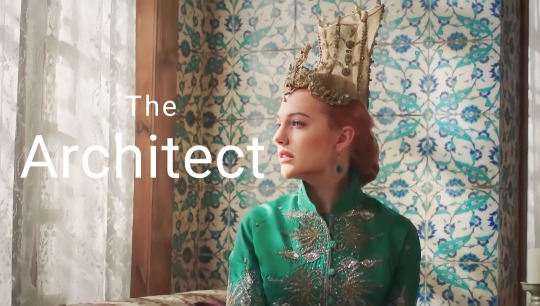

#haseki hurrem sultan#valide sultan#hafsa sultan#nurbanu sultan#history#16th century#magnificent century#magnificent century kosem#ottoman empire#ottomanladies#historical events#sultanate of women#women in politics#women in history#ottoman sultanas#ottoman history#historyedit
38 notes
·
View notes
Text
Controversial origin of Halime Sultan
For many years the life of Halime Sultan had been a mystery. Not only her place of birth,but even her period in harem and tenure as Valide was unknown. Many thought the mother of Mahmud was killed along with him, some said she survived, but was banished. Even her Muslim name was unknown and was mentioned as fulane sultan for quite a long time, until it was found that she was called Halime sultan.
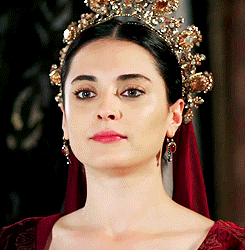
Like almost everything about her life her origin was mostly a mystery, However today it is accepted that she was from Caucasia, particularly from Abkhazia. However, that doesn't make everyone clear about her ethnicity. Confusion mainly comes because the term "Abkhazian" might include several people: Native Abkhazians, who settled here in ancient times, there were two major tribes in Abkhazia ubykh-abkhazs(genetically closer to Circassians) and Georgian-abkhazs(almost genetically identical to western Georgians). However, the number of people in each tribe varied from time to time, however generally Georgian-abkhazians were more loosely-settled, mainly because during the rise of civilization during iron age,pre-classical and classical antiquity, when Abkhazia was part of first Kingdom of Colchis and then kingdom of Egrisi(lazica), both were kartvelian kingdoms, created after unification of native Kartvelian tribes that lived there, two kingdom covered teritories from todays Abkhazia to some parts of eastern Anatolia. Therefore, Georgian-abkhazs promoted that time. In 697, the kingdom of Egrisi devided, into the de-facto kingdom of Abkhazia from 697-780's and the official kingdom of Abkhazia from early 780's to 1008 that included not only modern Abkhazia,but whole teritories of modern eastern Georgia and parts of Turkey and Russia . The official language of the pre 780's kingdom was Georgian, was ruled by Georgian-abkhaz Nobel families and was almost entirely settled by Georgians. After the 780s it was even more dominated by Georgians and that was time, when on the territories of the modern days republic of Abkhazia along with Georgian-abkhazs and ubykh-abkhazs western Georgians actively started to settle. From 1008 to 1490's it became part of the united kingdom of Georgia. After the 1490s it was invaded by Mongolians and divided into western and eastern parts. That is a period when Circassians slowly started to enter Abkhazian territories. Now back to the topic, up until late sixteenth century Abkhazia was Georgian dominated land, in 1570's same time as ottomans, many Circassian tribes started infiltrating Abkhazia and unlike peaceful natives, started to invade homes of weakened Georgians and as a result during the climax of invasion in 1580-90's mass slave trade burst out and thousands of Georgian-abkhaz and mingrelian girls found themselves in ottoman slave market.
Halime sultan was born around 1568-70, therefore in 1580-90's she could have been anywhere from 10-12 to 20-22 years old, considering Mehmed III received his sanjak in 1583, Halime was likely gifted to him that or next year, at very least she was already favourite in 1586, so she was bought quite before that time. So perhaps she was freshly brought little Georgian in the Ottoman slave market? Everything in this theory fits, her age, statistics, fact that slave markets were flooded by Georgians suggest that when we say that Halime was Abkhaz, it means Georgian-abkhaz, not Ubykh-abkhaz and definitely not non-native Circassians.

#history#historical drama#16th century#magnificent century#magnificent century kosem#mc: kosem#ottoman empire#ottomanladies#historical events#georgia#abkhazia#Georgian history#history of Georgia#halime sultan#ottoman sultanas#sultanate of women#sultanas#circassian#women in politics#historical figures#historyedit
28 notes
·
View notes
Text
10 most influential women of the Ottoman Empire(My[extraordinary] opinion]
Number 10: Ayşe Hafsa Sultan.

Number 9: Valide Emmatulah Rabia Gulnuş

Number 8: Mihrimah Sultan
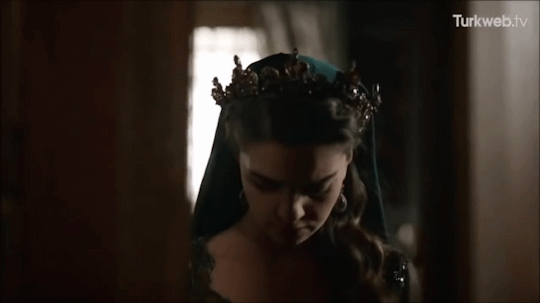
Number 7: (Naibe) Valide Handan Sultan

Number 6: (Naibe) Valide Halime Sultan

Number 5: Valide Safiye Sultan

Number 4: (Naibe) Valide Kösem Sultan

Number 3: Haseki Hürrem Sultan

Number 2:( Naibe) Valide Turhan Sultan

Number 1: Valide-I-Atik Nurbanu Sultan
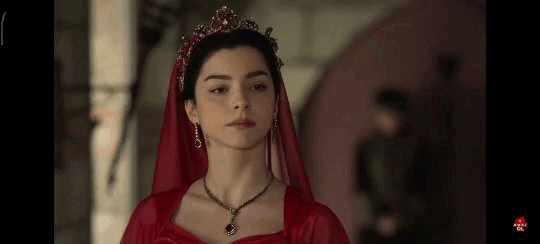
#history#historical drama#16th century#magnificent century#magnificent century kosem#mc: kosem#medieval women#ottoman empire#ottomanladies#historical events#safiye sultan#valide sultan#hurrem sultan#halime sultan#haseki hurrem sultan#women in politics#sultanate of women#women in history#top 10#kosem sultan#historical figures#historyedit#nurbanu sultan#turhan sultan#ayse sultan#17th century#world history
44 notes
·
View notes
Text

"[...] one of The Tudors’ acting powerhouses, the woman who, through her extensive research, incredible performance and understanding gave us the best portrayal of any historical figure we’ve seen in recent memory: Natalie Dormer’s portrayal of Queen Anne Boleyn.
Every other version I know of plays her one of two, rather shallow ways: partying and dancing heedlessly to her grave[...] A spoiled, dumbed down, scheming, diabolical, cheating, ruthless, manipulative brat [...] This version was particularly popular from the 1930’s through the 50’s, when she became a moralistic cautionary tale, and resurfaced during The other Boleyn girl/Wolf Hall portrayals, propagating her black legend of an incestuous, promiscuous witch.
The second way is the Ophelia/Cordelia route: A wide-eyed ingenue, a martyred, utterly clueless pawn murdered by ambitious, smarter and more powerful men, totally without her own agency or thoughts. This version is of more recent vintage (think Anne of the thousand days or the 2003 miniseries, to name a few), as a half assed attempt to make her more sympathetic, but I think it’s even more insulting than the “Anne as Salome” stuff of an earlier era. In short, they paint her as an absolute victim.
By contrast, Dormer’s version in the Tudors is the only one that I’ve seen that portrays Anne as she actually appears in the historical record: A savvy, charming, erudite, reformist, freakishly intelligent court player who could go toe-to-toe with the likes of Wolsey, Cromwell and even Henry himself, but also a lonely, isolated, stressed queen, trapped in a situation she simply couldn’t control."
-
"In the 21st Century dramatic portrayals of Anne returned to ‘Scheming Harridan’ territory with a side order of bringing possible incest back, with two adaptations of the Gregoryverse’s The Other Boleyn Girl and, of course, Wolf Hall. Claire Foy in Wolf Hall delivered great on what she was given, but that script for Anne was an instrument with only a couple of notes. The weight of Cromwell’s Hero Edit warped Anne into a complete and unremitting bitch. There was not a scene she spoke in (well, until she got executed) in which she wasn’t bullying or plotting or implying something nasty about someone.
By contrast, Dormer got all the notes, and played them beautifully. Partly as a function of scale of the role, with 21 epsiodes we got all of Anne’s rise and fall and we got to see the nuance of what her varying situations did to her behaviour and personality. We got a portrayal of Anne that felt like an actual human being, and that is a considerable feat with a woman who polarised opinion from the moment the English people found out she existed."
Day 6 - Favourite portrayal of a Tudor Family Member: Natalie Dormer as Anne Boleyn, TudorWeek2023
37 notes
·
View notes
Note
I would not exactly say that it's the primary reason. I would even argue that it's actually vica versa. Margaret Beaufort is not disliked because she can not be sexualised,but she is not sexualised because she is not well liked.
If I remember correctly, she was never described as ugly or unpleasant looking in any historical records. She was described as a thin woman and that was visible in her tomb effigy as well, that actually depicts quite pleasant looking elderly woman with crooked nose(kind of a trademark of Beauforts) and high chekbones. She acquired great reputation through her life,was very much respected and rarely ever did historians depict her negatively, therefore all her "ugly old hag" description comes from authors, who actually got to know her as historians depicted her, therefore in quite a positive light. Let's get off point for a bit and get other historical figures as an example
Anne Boleyn - never described as a beautiful woman, quite contrary she was unfit for the beauty standards of her time in almost every way. Still she is sexualised in movies.
Hürrem sultan- short and unattractive, still sexualised in every TV show or movie.
Elizabeth woodvile- described as beautiful and was described as such.
Let's say why those examples are relevant:
Margaret Beaufort is not disliked because she was ugly, she was made ugly by authors so she would have been disliked as they have intended. If I were the author focused on writing historical nonsense that would be sold well and started work on time period where there were two parties: one lead by handsome king and low born queen, who is as beautiful as sunshine, couple of the fairytales, whose love survived through social stigmas,wars and political intrigues and the other party a woman, who has no love life, is pious beyond reason, has an eye on the throne and actually threatens those two lovebirds. I will repeat again, this is the point of view of authors and screenwriters, they are not writing biographies, they are selling drama. All drama needs good and evil. Naturally, they would choose a potential romantic story as a good side of their drama, while a woman, who is pious, has no love life and is trying to take it from them gets to be a villain of the story. Therefore, Margaret Beaufort's fate was sealed from the beginning because of her less classic,protagonisticly colourful life, so Margaret, as the villain of the story, has to be disliked. Her characteristics were already villainised. Her piousness was interpreted as hypocrisy, her dedication as greed, love of her son as obsession etc. So what makes people dislike characters apart from inner ugliness? That's right outer look, so for the sake of her villainousness, her plain look turned into ugliness.
Let's get back to our examples:
Anne Boleyn and Hürrem Sultan had worse descriptions than Margaret Beaufort,but still they were sexualised. Why? Because they were meant to be liked. They had all the potential in the world to be good protagonists and one thing about unpleasant looking protagonists is that they do not sell well. Therefore their look was "updated" to the point that along with the story and their remarkable characteristics, they were also eye candies to the viewer.(and it's not only about male ones, women are ones fighting in the frontline, while criticizing casting choices),
What I am trying to say is that, you might be right that beauty associates with goodness as years and years of misportraying physical defects or non-classic/unpleasant characteristics as sign of evil, as well as humans' natural attractions to beautiful things( yes, everyone wants beautiful protagonists, human likes all things beautiful, every creature does. People always look for something beautiful,perfect, flawless, something they would look up to, something that would be their role model, so "beautiful soul in a beautiful body" is what most people like. Have you ever seen the reaction of Hürrem/Anne Boleyn fans when they hear she was not beautiful?) But, you are wrong when you say that Margaret Beaufort is disliked because she is ugly, she is actually disliked because of an unfavorable portrayal of her personality, physical ugliness only helps aggravate negative feelings authors/screenwriters wanted us to have.
There's a part of me that thinks that the reason why Margaret Beaufort isn't all that well-liked in her portrayals in fictional media is partly because she can’t be sexualised.
Oh, absolutely! This is very evident in Gregory's novels where she is described as 'ugly as sin'. We all know the first thing mocking a woman for her appearance does is to single out said woman as particularly inferior, evil and/or undeserving of love and respect. It is, of course, convenient to blame a woman to absolve a man.

Everything about Margaret Beaufort is villainised, even her piety — which is another thing that makes Margaret so difficult to sexualise: there's no evidence that she ever had some great romance. On the contrary, she took a widow's vow of chastity whilst her husband was still alive. In the Gregory-esque logic of thinking, a woman is either beautiful and desirable and good, or ugly and frigid and evil.
105 notes
·
View notes
Text
10 most influential women of the Ottoman Empire(My[extraordinary] opinion]
Number 10: Ayşe Hafsa Sultan.

Number 9: Valide Emmatulah Rabia Gulnuş

Number 8: Mihrimah Sultan

Number 7: (Naibe) Valide Handan Sultan

Number 6: (Naibe) Valide Halime Sultan

Number 5: Valide Safiye Sultan

Number 4: (Naibe) Valide Kösem Sultan

Number 3: Haseki Hürrem Sultan

Number 2:( Naibe) Valide Turhan Sultan

Number 1: Valide-I-Atik Nurbanu Sultan

#history#historical drama#16th century#magnificent century#magnificent century kosem#mc: kosem#medieval women#ottoman empire#ottomanladies#historical events#safiye sultan#valide sultan#hurrem sultan#halime sultan#haseki hurrem sultan#women in politics#sultanate of women#women in history#top 10#kosem sultan#historical figures#historyedit#nurbanu sultan#turhan sultan#ayse sultan
44 notes
·
View notes
Text
I saw Cardi B throwing a microphone at one of the fans and I know I am not a master editor,but I had to do this🤣



I think it kind of fits well🤣
23 notes
·
View notes
Text
10 most Influential women in the Ottoman Empire (plus five non- sultans)
I must say in advance, this is purely my opinion and it doesn't include legal power,but general influence. For example if one woman had more legal power but still was limited to some actions, that another woman could get away with, I will rank her higher. Let's start with non sultans.
Part I: Non-Sultans
Number 5: Çevri kalfa

Çevri kalfa was a woman of Georgian origin and previously loyal servant to Nakşidili Sultan (also Georgian). She became mistress head treasurer( Baş hazindar usta) after accession of Mahmud II, who she saved from executioners by throwing them hot coals and sneaking the prince out. After becoming Head treasurer, she attained so much wealth that she could afford expensive clothes not even sultans wore. A girls school, built in her name, is one of the first schools for girls and the biggest primary school in Istanbul. She remained in her office until her death and was Sultan's trusted and favoured advisor.
Number 4: Meleki Kalfa
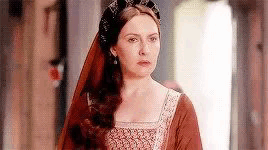
Meleki kalfa was a servant of Kösem and Ibrahim, however following the deposition of the sultan, she secretly switched sides as an agent of Turhan. Meleki played an important role in Turhan's rebellion by giving her information about Kösem's plan to dethrone Mehmed. After Kösem's death and Turhan's accession, she became an important person in Valide Sultan's court, was freed and married to Şaban Khalife. The couple built a residence in Istanbul, where Meleki not only conditioned her line of information to Turhan, but also acted as a negotiator in the palace on behalf of people. The political influence of her and her husband grew so much and they were murdered in 1656 for abuse of power.
Number 3: Gulfem Hatun

I have spoken about her in my previous posts
Number 2: Mahidevran Hatun
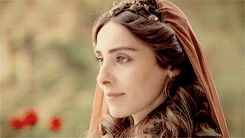
I have thought a lot about where to put her. People would expect her to be Number 1,mostly because they are used to her being sultan. That is what I first thought,for other reasons,but here we are. She has several significant influences that not many other women had:
1. She was popular with janissaries and people
2. Had a spy network, allowing her to hear major events happening in the capital.
3. She had strong allies. Ibrahim Paşa supported her and Mustafa later in his life, Hatice and her husband were supporting her openly or indirectly.
4. She was a considerable rival to the first and one of the most powerful women in the ottoman empire.
5. She had powerful characteristics: Was an intelligent, educated woman. Could mask her resentment towards Hürrem and act calmly around him.
6. She was a trusted advisor to her son. Actually, she supported the idea of Mustafa revolting against Suleiman,but only after she received information about his imminent execution, through her spy network.
Number 1: Çanfeda Kalfa

Çanfeda was the woman of Circassian origin, who served as second in command of Nurbanu for 18 years and the ruler of harem for another 11, so we can say she was de-facto Valide sultan.
In her almost three decades of service, she acquired wealth, so great that it attracted negative attention of Janissaries and even the grand Vizier. Although she collected such affluence through her salary(that was extraordinarily high consisting of 200 akches a day, it was the average salary of an imperial princess) and bribery, she used it for selfless purposes. She built three mosques, fountains, hamams, two schools, irrigation systems and fixed the roads, costing her several million akches, still she remained as one of the wealthiest people in the empire. In 1595, when Safiye exiled her, she needed dozens of carriages to carry her holdings, which apparently did not consist of much of the furniture, because she bought it from Venice the next year. It's also considerable that as an exiled person, she had to give up some of her wealth to imperial treasury.
Apart from her vital involvements in harem management in which she dominated Safiye, she had considerable influence over state matters as well. Çanfeda used her connections to install her not so bright brothers as paşas and after the series of mistakes,they were imprisoned, Çanfeda not only defied Grand viziers orders and had them set free,but restored them to their offices as well. Her power, wealth and influence came to the attention of Janissaries, who demanded her dead, but she got away with this as well. Another indication of her power, was her attempt to free the second son of sultan Murad. Even though she was caught red handed, the power it would take to infiltrate the prison is still considerable.
P.S. I did not list Halime and Handan,because after becoming Valide Sultans and regents they reached a whole different level, leagues above almost every single woman in ottoman history, however their power and influence was immense even when they were Hatuns.
As there is only 10 images/Gif limit. I will speak about 10 most powerful women in second posts.
#history#historical drama#16th century#magnificent century#magnificent century kosem#mc: kosem#medieval women#ottoman empire#ottomanladies#historical events#canfeda hatun#gulfem hatun#mahidevran hatun#mahidevran sultan#ottoman sultanas#ottoman history#ottoman#women in politics#sultanate of women#women in history#historical figures#historical#historyedit
68 notes
·
View notes
Text
Mistakes in the Magnificent Century part III
(title, ranks and traditions)
Some facts might be the same or very similar to the ones in previous parts,but they will be discussed from different angle.
1. Valide Sultan title
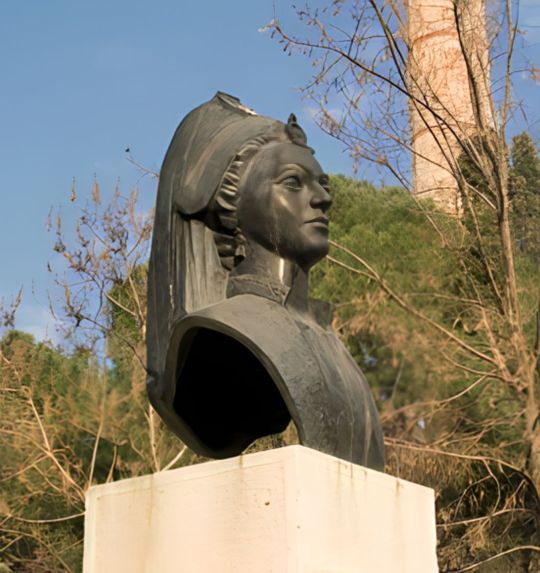
As I have spoken in the previous chapters, pre 1520 mothers of sultans were not sultans at all, they were titles as hatuns, though treated with utmost respect. In 1520 as Suleiman the Magnificent ascended the throne, he bestowed the title of Sultan to her mother Ayşe Hafsa, thus making her the first person in the ottoman history to become sultan from slavery. However, for Ayşe Hafsa being Sultan was not the same as the Valide Sultan that we know today. She was sultan yes, and she was the mother, so "Valide" was the proper address,from her children, as it was for every mother in the Ottoman empire, she was registered as "the mother of Sultan Suleiman", therefore in some sense, we can say she was not "Valide Sultan".
The first person,who actually made the "Valide sultan" a thing and officially registered herself was Nurbanu. So, the first Valide sultan with its full meaning was not Hafsa,but Nurbanu, who was registered as Valide Afife Nurbanu Sultan.
2. Haseki Sultan and Hürrem's marriage.
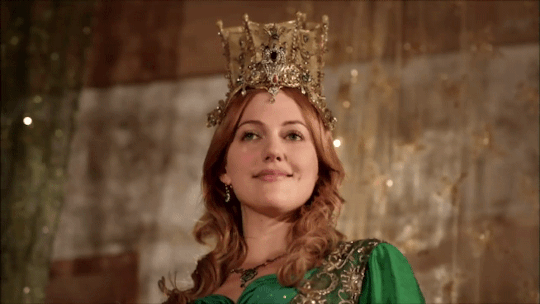
There were more than just several miscon- ceptions about the subject in the show.
First and foremost it was created specifically for Hürrem,so neither Hafsa nor Mahidevran have ever had the title. It also brought another mistake about Hafsa,that I will explain below,but now I will just make clearer how, when and why the status was created.
It was almost definitely created in mid-1534 after the death of Ayşe Hafsa Sultan and was probably legalised by their marriage, which by some sources is mentioned to be in 1533. If this is right, then it would mean, Suleiman married Hürrem before he gave her the status of Haseki and the marriage only freed her,but the most common and for me the most logical version is that after the death of Hafsa Sultan, Suleiman married her and gave her the title.
The death of Hafsa Sultan is a crucial part in the story, nor because she had some kind of objection towards Hürrem or her promotion,but the legal status of Hürrem reached its peak of necessity after her death. As we know, Ayşe Hafsa was a trusted ally and Confidant of uprising Sultan, even during his time as shehzade, so during the campaigns, his mother was the supervisor of the capital and his family, so the sultan could go to war without worrying about what he was leaving behind. However, after Hafsa's death things changed, Süleiman lost beloved mother and most trustworthy person around him, he needed to act immediately,as the campaign was near. He needed someone,whom he could entrust Harem, Family and the capital. His children were little, Sisters(whom by the way he trusted very much) were all married and Hürrem did not have a proper rank. It is said that he also discussed the candidate of high ranking harem servants, one and most promoted one of whom, in my opinion, would have been Gulfem, but he finally found the best possible solution that would affect his empire for centuries. He married Hürrem, gave her the rank of Haseki Sultan and left her in charge of the Harem, Family and the empire.
Hürrem became the first Haseki sultan in history.
Misusage of the title did not and here and there, not only the status and function,but even relevance of achievement was changed here. In the very first episode, Nigar kalfa made it clear that giving birth to a son, was enough to achieve it however, originally only the chosen ones could become Hasekis until its relevance faded during Murad's reign and completely lost exclusivity during Ibrahim's.
Essentially, the original function of haseki sultan was filling the absence of Valide, therefore only Hürrem and Nurbanu can be considered as the "original Haseki Sultans". Later many women were given the status, however the show made it wrong. Mahidevran,Mahfiruz and Halime never held it, however Şevikar, referred as Şevikar hatun in the show, was actually Haseki Şevikar sultan, the fifth Haseki of Ibrahim, three of whom, Ayşe, Mahinerv and Saçbağli, were left out, which is kind of understandable, because they had no importance in plot, unlike Turhan, never became Valide,unlike Saliha Dilaşub and Muazzez and had no influence on Ibrahim,Unlike Şevikar and Humaşah.
Their social standing is also misportrayed in the show, where Haseki ranks below and bows to imperial princesses, while in real life it was the other way around.
3. Daughters of Ottoman Princesses

In the show, we met three daughters of the ottoman princesses: Esmahan,Huriçihan and Humaşah. They are referred to as Sultans,but in real life the daughters of imperial princesses were not called so,instead they had the title Hanimsultan and ranked even below the imperial consorts. The only exception to that was Humaşah, the daughter of Mihrimah Sultan, who received the title and prestige of the Sultan.
4. Harem Kalfa
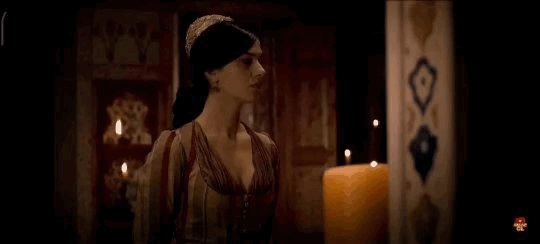
In the show, they are just giving people the rank left and right. Nigar was already a high ranking, trusted servant of harem,but it turned out that she had only been there for 6 years. Fidan hatun was banished for attacking Sultan,but after a while she returned and became Kalfa, in Kösem melek hatun received rank out of the blue etc.
In real life, however, becoming kalfa was a long process. As we know,there were hundreds or even thousands of girls in the harem,but only a handful of them would become favourites,but what would happen to others? After ten years of being a harem resident some of them would have been transferred from harem and soon married off, some could by freedom, while others, usually the smartest and most responsible ones,would go to a special school that lasted two years, they would revive extensive training, both intellectual and physical, after that they could return in harem as teachers and overseers and if they were good enough they could promote.
There was actually quite a complicated hierarchy of harem servants,not only there were Kalfa's who had duty to supervise certain works like food or laundry(later even coffee),but there were administrative ranks, that they could achieve:
Mistress chief treasurer(Baş Hazinedar usta): she was head of the harem treasury.
Treasurers(Hazinedars): there were other hazinedars as well, who worked in harem treasury. Baş hazinedar usta was their direct superior.
Imperial Kalfa(Hünkar Kalfası): Personal kalfa of the padişah.
Lady stewardess(Kahya kadin/Kethüda Hatun): she ranked below imperial consorts,but her role raised during sultanate of women, when Gülfem and Çanfeda held the office, they were right hand women of Chief Harem managers(Hürrem and Nurbanu) therefore second in command of the Harem.
Senior Kalfa(Büyük Kalfa): Head of Kalfas, she was responsible for literally everything that was happening in the harem, sultans and şehzades treated her with respect and called "my kalfa" or "your grace"
Lady secretary: secretary of administrative organs of harem.
Junior kalfa( Küçük Kalfa): Senior kalfa was their direct superior. They had ranks within( second- ranking, third ranking, novice etc.) They were sometimes teachers and daily overseers.
Çanfeda for example entered the harem with Nurbanu, so in late 1530's or early 1540's. Nurbanu became favourite and went to Manisa, while Çanfeda remained in the old palace, in 1566 she was already a high ranking kalfa in the old palace, when Nurbanu called her. That would mean she was sent to train as kalfa in late 1540's or yearly 1550's, therefore she would have a decade or two to raise in ranks.
5. Princely harem.

In the magnificent century, prince usually gets his harem, whole in Topkapi palace, which is the lie through and through. They went even further and made up with the rule that the prince can not have a child with their concubine until they get their province to rule. Why would they be allowed to have concubines,but not having a child, when contraception is still unreliable.
Actually, their case was far more easier, princes would revive their sanjaks while still very young, their mothers, governesses and close servants would carefully choose their harem and leave the palace with their mother and full sisters. That also brought another mistake in the show. In the flashbacks, we can see Ayşe Hafsa and Hatice visiting Suleiman in Manisa, however Ayşe Hafsa along with Fatma and beyhan left for Manisa with Suleiman in 1512, while Hatice,being 4 years older than Suleiman, got married the same year.
6. Regency
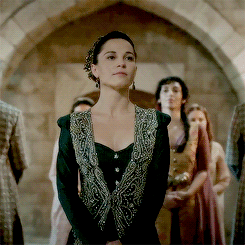
They introduced Kösem's regency as something unheard of,while completely neglecting Handan and Halime.
Handan was the first woman ever to rule as regents in her son's stead. She appointed viziers, discussed political matters and built a trusted circle for her son.
Halime was not officially registered regent but due to the insanity of her son, paşas asked her to rule the state after the rebellion she herself organized.
Kösem's and Turhan's regency is well known, so I will not speak about it.
7. Kösem's wedding

Not exactly the mistake as it is not proven, but as the event is highly unlike, I'll just put it there.
In 1609 it is said that Ahmed had four children with two women,but neither of them were married to him. In the two latters, one form 1612 and other from 1616, the 1612 letter straight out mentions her as sultan's concubine, who he loves the most and in 1616 she is mentioned as juts Haseki,but nothing is said about the marriage( I am not adamant about him not marrying her,I am just saying that it's unlikely, however I admitt she might indeed was concubine in 1612 and after the death of Mahfiruz, Ahmed married her and raised her stipend),however early in Kösem's regency vencians questioned ottoman practice, that mother of sultan was honoured and even given the regency,despite not being married to his father. As we know in Venice and generaly in Europe, source of power for woman was her marriage and not just motherhood. That is a time, when it was "unrevealed" that ahemd married her before he died,(if that latter is to be believed than Kösem and Ahmed did not marry in 1613), now it was actually thought that it was false information used by Kösem to strengthen her position in the eye of Venice as they needed friendly relation with them. That is not widely accepted,but it can be strengthened by the fact that Vencians still did not believe it, so perhaps they knew for sure that it was lie?
8. The death of Halime sultan and Mustafa.

In the show Halime, like many others, is victim of making Kösem seem more powerful, while Mustafa was killed by Murad. In real life, Mustafa died of natural causes, probably because of epilepsy in 1539, he was buried in Hagia Sophia and the coffin was placed in a mosque built for him. Halime is buried next to him and no permission of reburial was asked or granted, therefore Halime was not killed by Kösem, she went to the old palace and lived a long life.
9. 1517-1540
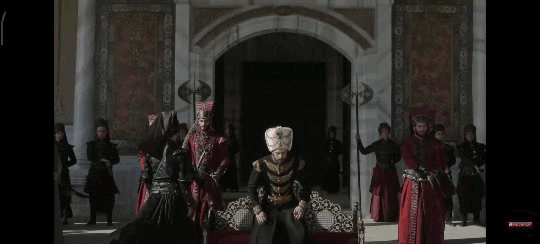
I'll be honest, I don't remember much of those episodes, they were boring and monotonous for me, but what I remember is one part from Kösem's iconic " The state you are talking about is mine" speech. She mentioned that she took over the reins of the state from Ahmed 15 years before the event, well that is a huge lie. Though the show runners tried to make Kösem all powerful, the invincible mastermind behind every single breath people drew in the empire,but she was actually quite powerless from time to time and the period between 1617 and 1623 is one of such. She was still young and inexperienced that time and main powerhouses in the empire were Halime and Osman's faction and she was not the leading force during any of the rebellions, she was allie of Halime, who, according to many historians, had major influence that time and the great impact on Kösem. Some even go as far as claiming that she persuaded Osman to kill Mehmed, so Kösem would take her side.
In short, Kösem did not have reins of sultanate for 15 years,but only about 10.
As I said, I don't remember much about the episodes, but from what I remember, Kösem had something to do with Murad's death. I'll be short on this: that's a lie.
10. Coup of 1648

The show made Kösem something of a filicidal tyrant. However, In real life her tyrannical tendencies appeared only after the death of Ibrahim, which he had nothing to do with. The ones behind the incident were Turhan and her faction. Kösem indeed took part in the Ibrahim's dethronement for the good of everyone,but mainly because she had seen the mad sultan dethroned,but lived. Mustafa had a similar situation,he was dethroned and locked in kafe, while his mother was sent to the old palace, which Kösem was absolutely willing to do. However, Turhan made her move and had Ibrahim executed to get rid of opposition for good, or perhaps because of the old resentment. Things did not go exactly as she had planned though, Kösem became regent and visibly started to avenge Ibrahim's death, it became clear that she was not going to hand over any power to Turhan and after she started to oppose even went as far as attempted dethronement of Mehmed(however she was not going to kill him.)
Therefore the child killing monster the show made her become is straight out a lie. One of her sons died of natural causes and the other was killed by outer forces, that she tried to avenge.
#history#historical drama#16th century#magnificent century#magnificent century kosem#mc: kosem#ottoman empire#ottomanladies#historical events#historical figures#sultanate of women#haseki hurrem sultan#hurrem sultan#nurbanu sultan#kosem sultan#safiye sultan#muhtesem yuzil kosem#historyedit#historical#ottoman sultanas#ottoman history#ottoman#mistakes in the magnificent century
145 notes
·
View notes
Text
#history#historical drama#magnificent century#magnificent century kosem#medieval women#ottoman empire#mediaeval#historical events#medieval history#historical figures#histiryedit#ottomanladies#ottoman sultanas#women in politics#sultanate of women#women in history#women in power#mc: kosem
8 notes
·
View notes
Text
Wonderful post @realcatalina I have not gone so deep into analysing that portrait,so it's the first time I've heard of it, however I've always supported the idea that it was Catherine of Aragon and now that I have read you post I agree that it could very well be a pomegranate flower,which would straight out mean it indeed is Catherine of Aragon for several reasons:
1. Pomegranate was her sigil.
2. It was a very popular fruit in Spain. In Spanish the language pomegranate translates as "Granada", which happens to be the name of a very important region of united Spain and one of the most important victories of Isabella and Ferdinand.
3. According to some tales, there was a garden of pomegranates in the palace Catherine was brought up.
4. Folklore has it that Isabella once said, she would "Just like the pomegranate,[I will]take over Andalusia seed by seed."
5. Pomegranate is a symbol of Hera, goddes of marriage.
At the end of the day, Catherine has close connections with the fruit.
What flower is on Catherine of Aragon's necklace?
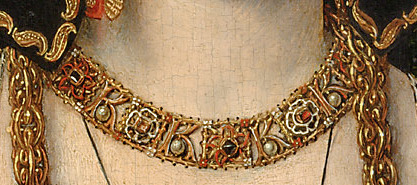
White rose and? If you say red rose, then you need to have your eye-sight check, seriously.
Read further if you want to know what this reddish-orange flower might be.

This portrait needs no introduction. There are multiple theories as to who it us and my fans know I firmly believe it is Catherine of Aragon and not Mary Rose Tudor.
Well, about a month ago I've red an article which mentions the problematic: Michael Sittow Exhibition and Catalog Review by Stephan Kemperdick.
He is curator in Gemäldegalerie in Berlin.
And words of Dr Kemperdick has restored my faith in proffesionals who deal with art. Because his take upon this portrait...it's pure proffesionalism at its best. How it should be.
(Although bit confusing to normal fans because Mr Kemperdick is refering to the portraits not by names we fans use...but their locations or other names...I was ok with it...I think most of you would struggle with it.)
He makes such excellent points regarding this portrait.
And today I'm going to talk about one of them, one which I have known about for while, but kept putting on for later, because I had no answers.
This necklace is not showing white and red roses!
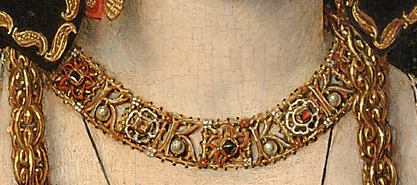
The white flower looks like rose, but the other flower is not even red! It's orange-red! And has pointy leaves! Roses with such petals didn't exist in Tudor era! (And I'd say they don't even now.)
White rose+orange-red flower with pointy leaves is not representation of Tudor rose!
That this necklace is showing Tudor roses is false observation, which is insisted upon! And false observation made both by Mr Mathews when he identified it as Mary Rose and by Friedländer(the guy who identified it as Catherine of Aragon in 1915.
Don't get me wrong, I still believe it is Catherine...but what the hell is the other flower?! What is this orange(or slightly red) pointy thing?!
I tried to find something which would fit...but it's probably not orange lily...tulips look good from side but not from this angle...
What the hell is it...and why would it be important to Catherine.
Straight away i went to look, how does pomegranate flower look like.

Colour ok? Orange-ish red...but completely wrong shape of petals.
So I thought that is the end of the theory. Then I went on holiday...and by chance there were dozens of pomegranate trees/shrubs. Most had already nice green fruit(not yet ripe), rather large even.
But there were few blooms and I noticed something.
Pomegranate flower has something very curious behind the petals.

And I thought...is that beginning of fruit already? Seems odd...These things were very red...and all pomegranate fruits on tree were very green...not hint of redness in them.
Apparently this thing behind the petals of pomegrante flower is called sepal, it protects the flower in the bud, and then in some fruit types the sepals can form 'accessory fruit'-it doesn't fall off, but becomes part of the fruit itself. In pomegranate's case, can you guess which part?

And amazingly, after petals fall off, often the sepals are no longer so vividly red...but instead turn to peachy orange with some redness:


Normally it has 6 sepals but I've seen few with 7, and on grown fruit(already not orange) I've seen even 5.
So I think it is possible that the orange flower on Catherine's necklace are sepals of pomegrante.

Pomegranate in unsual form.
Seriously, it has been identified as Catherine for so long..before Mary Rose nonsense started...and nobody thought to investigate if it could be pomegranate?
...Insisting upon false observation indeed!
And remember what Mr Mathews said...it can't be Catherine of Aragon, because her symbol is pomegranate...and she is not wearing it.
Except she might be wearing pomegranate...just not in usual form.
78 notes
·
View notes
Text
#history#historical drama#magnificent century#magnificent century kosem#medieval women#ottoman empire#mediaeval#historical events#medieval history#historical figures#histiryedit#ottomanladies#ottoman sultanas#women in politics#sultanate of women#women in history#women in power#mc: kosem
8 notes
·
View notes